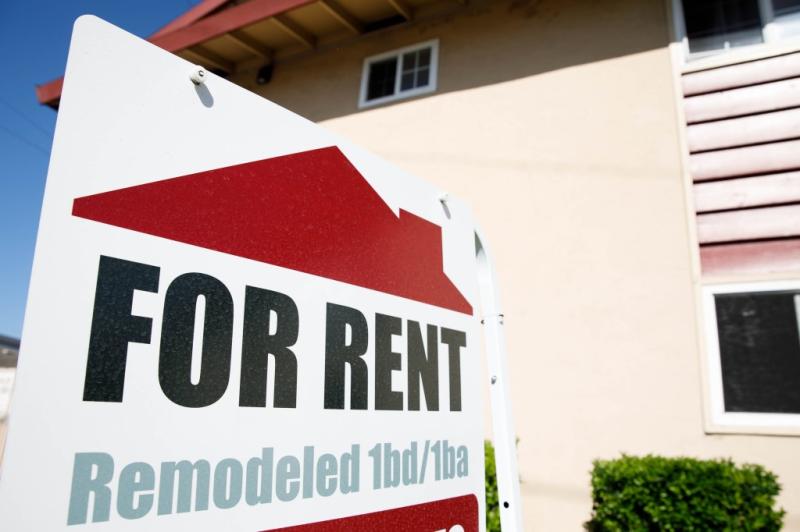
Would-be homebuyers squeezed by astronomical real estate prices and high interest rates are among those in the hunt
The Bay Area rental market may be steadying after three years of pandemic fluctuations, but competition is heating up for Silicon Valley apartments as would-be homebuyers are squeezed by astronomical real estate prices and high interest rates on home loans.
Rental listing site RentCafe, in a new report, found that 11 renters are vying for every available South Bay apartment. That compares to a nationwide average of eight applications for each advertised rental unit.
A severe lack of housing has long pushed Silicon Valley residents into fierce competition for apartments. But now, high mortgage rates topping 6% are making it even harder to afford local home prices that regularly top $1.5 million, meaning more people are on the hunt for rentals, said Doug Ressler, a housing market expert with RentCafe.
Another reason: Excitement over artificial intelligence and other innovations by the South Bay’s leading industry is luring back tech workers who emptied out of the region during the pandemic.
“What we see is some of the newer technologies beginning to show there is life in the Bay Area,” Ressler said.
RentCafe, a Santa Barbara-based online apartment search platform, looked at apartment application rates and other metrics such as lease renewals and occupancy levels to come up with competition scores for 134 of the largest rental markets across the country. Since last year, Silicon Valley’s score jumped the most nationally, landing the South Bay as the 27th most competitive place to rent in the U.S. The report analyzed buildings with over 50 apartments and did not include rent-restricted affordable units.
The top competitive market? North Jersey, with its proximity to New York City. The highest rank markets in California were Orange County coming in 11th, followed by San Diego at 13th.
Competition in other parts of the Bay Area outside of Silicon Valley has been slower, however, which Ressler attributed to the entrenched region-wide shift to remote work. In San Francisco, just six renters are applying for each apartment. And in the East Bay, there are nine prospective renters for every unit.
In the South Bay, the increased demand isn’t translating into significantly higher rental prices. That could be because more apartment complexes are opening amid statewide efforts to spur construction, including proposed legislation to make it easier to convert empty office space into housing, Ressler said. RentCafe forecasts more than 4,000 units will come online this year, boosting the South Bay’s multifamily housing stock by 3%.
According to data from rental listing site Apartment List, the median monthly cost of a new lease for a two-bedroom apartment in the San Jose metro area is $2,549. That’s just a 1% bump from February and a 3% increase from the same time last year.
Still, that’s far out of the price range of many apartment hunters. One such searcher, a part-time barista and student, said she has responded to countless Craigslist ads for rooms in shared apartments in Mountain View near Foothill College, where she plans to enroll this summer. She’s only heard back on about a third of her inquiries and has yet to land a spot.
“There are a lot of people who reach out, especially when the price is low,” said Gauri, who declined to give her last name. “It’s really a competition between who’s wealthier and who’s not.”
Meanwhile, in the San Francisco metro, which includes the East Bay and Peninsula, a typical two-bedroom apartment is going for $2,186, an uptick of less than 1% from February and from last year.
Rob Warnock, a senior researcher with Apartment List, said the modest price gains in March reflect a return to seasonal trends following an unpredictable ride for the Bay Area rental market during the pandemic.
“It’s a welcome sign as far as following the historical pattern that’s largely been broken the past few years,” Warnock said.
When the pandemic hit in March 2020, rental prices in the region’s population centers cratered by up to 25% as renters fled to the suburbs and less expensive parts of the state and country. Rents rebounded in 2021 as public health restrictions were lifted and more people returned, but the Bay Area as a whole was spared from the soaring price jumps seen nationwide.
Around the middle of last year, Bay Area rents began to drop again as recession fears, tech sector layoffs and the rising cost of goods tamped down demand. Now, even as economic uncertainty persists across the region, prices are starting to tick up again.
Even so, rents in some of the region’s largest job hubs haven’t come close to reaching pre-pandemic levels, one of the few parts of the country where that’s true. Median two-bedroom rents in San Francisco ($2,546) and Oakland ($1,764) are at least 12% lower than in March 2020, according to Apartment List.
At the same time, vacancy rates in those cities and across the region have dropped by as much as half to around 5%, according to Apartment List, suggesting there’s still interest in moving to the Bay Area. And with a chronic undersupply of homes, Warnock said, the local rental market will likely remain among the most expensive in the country, even as more apartment buildings open and prices remain relatively depressed in some areas.
“You are still competing with a lot of people, and you’re probably competing with people who make more money than you,” Warnock said.
Full article by Ethan Varian: https://www.mercurynews.com/2023/04/03/in-silicon-valley-nearly-a-dozen-renters-compete-for-every-available-apartment/

